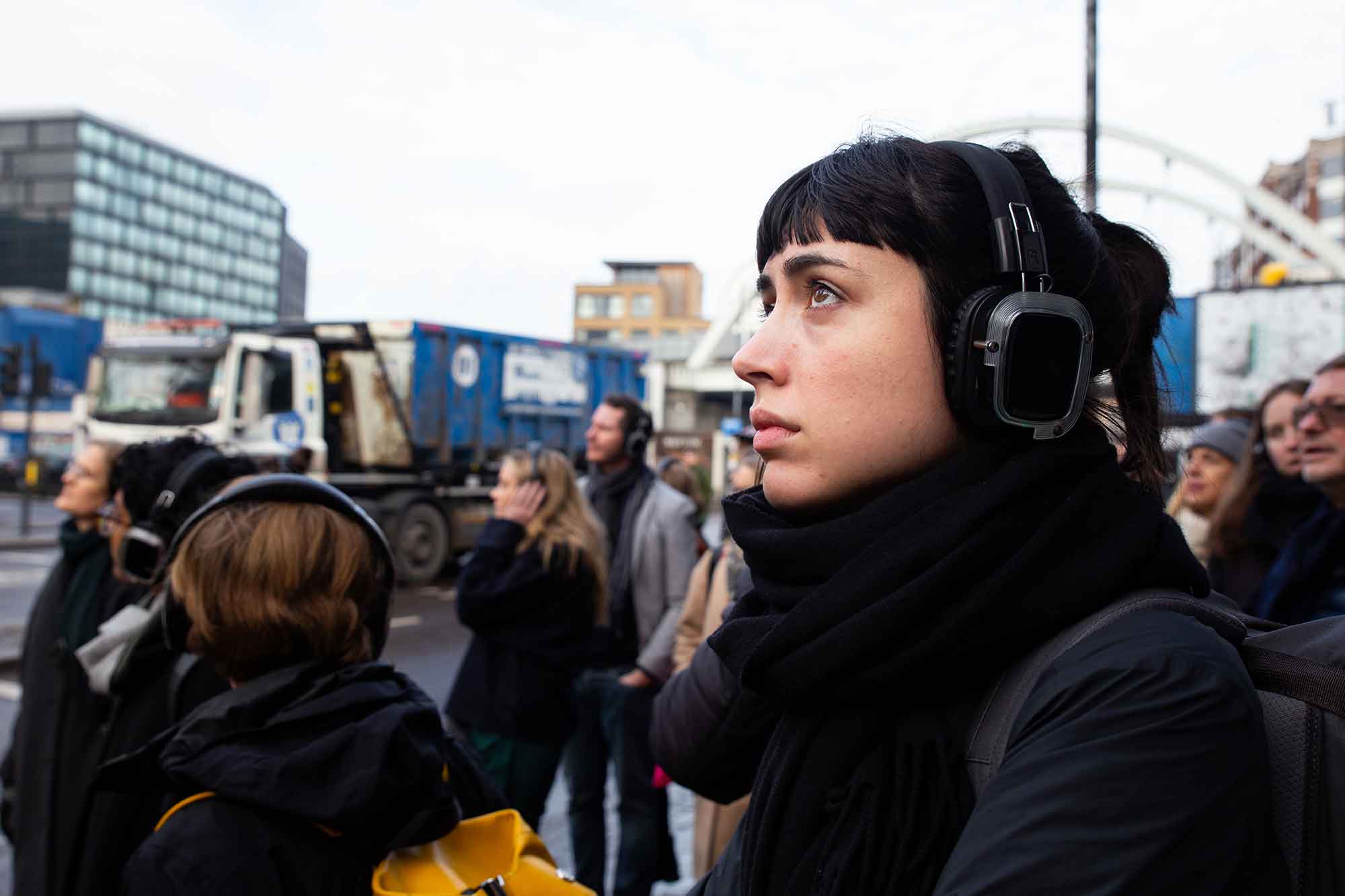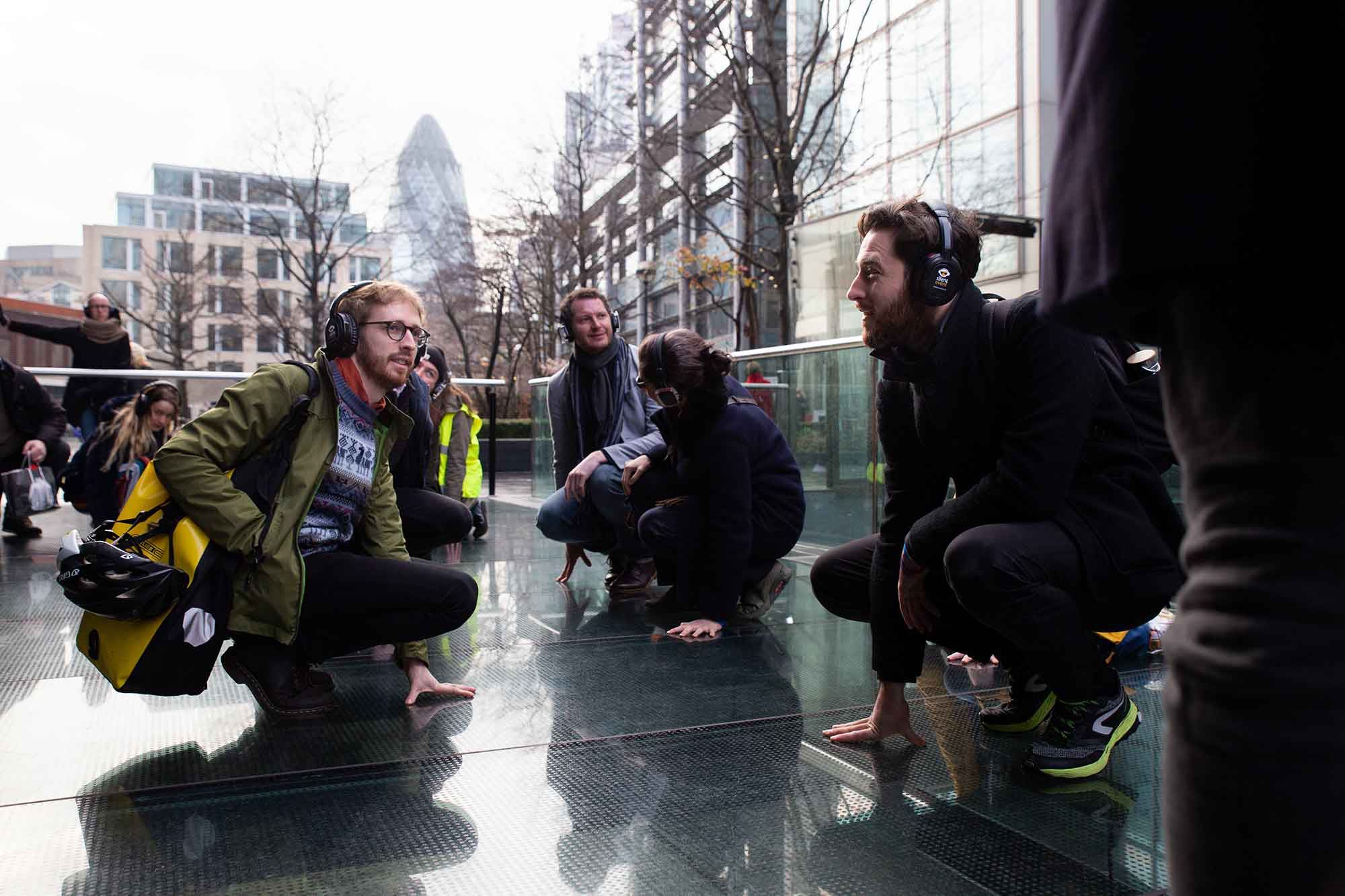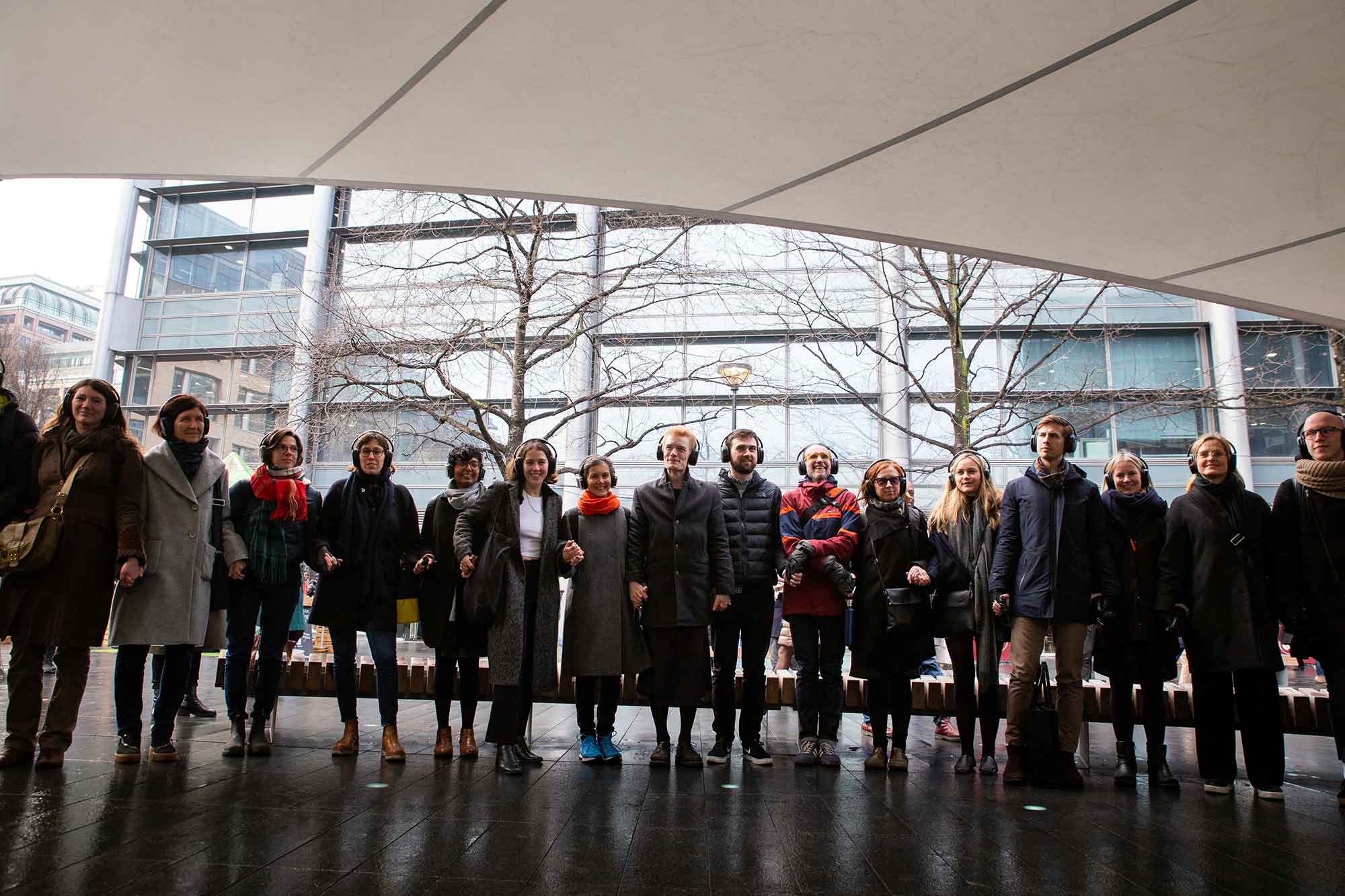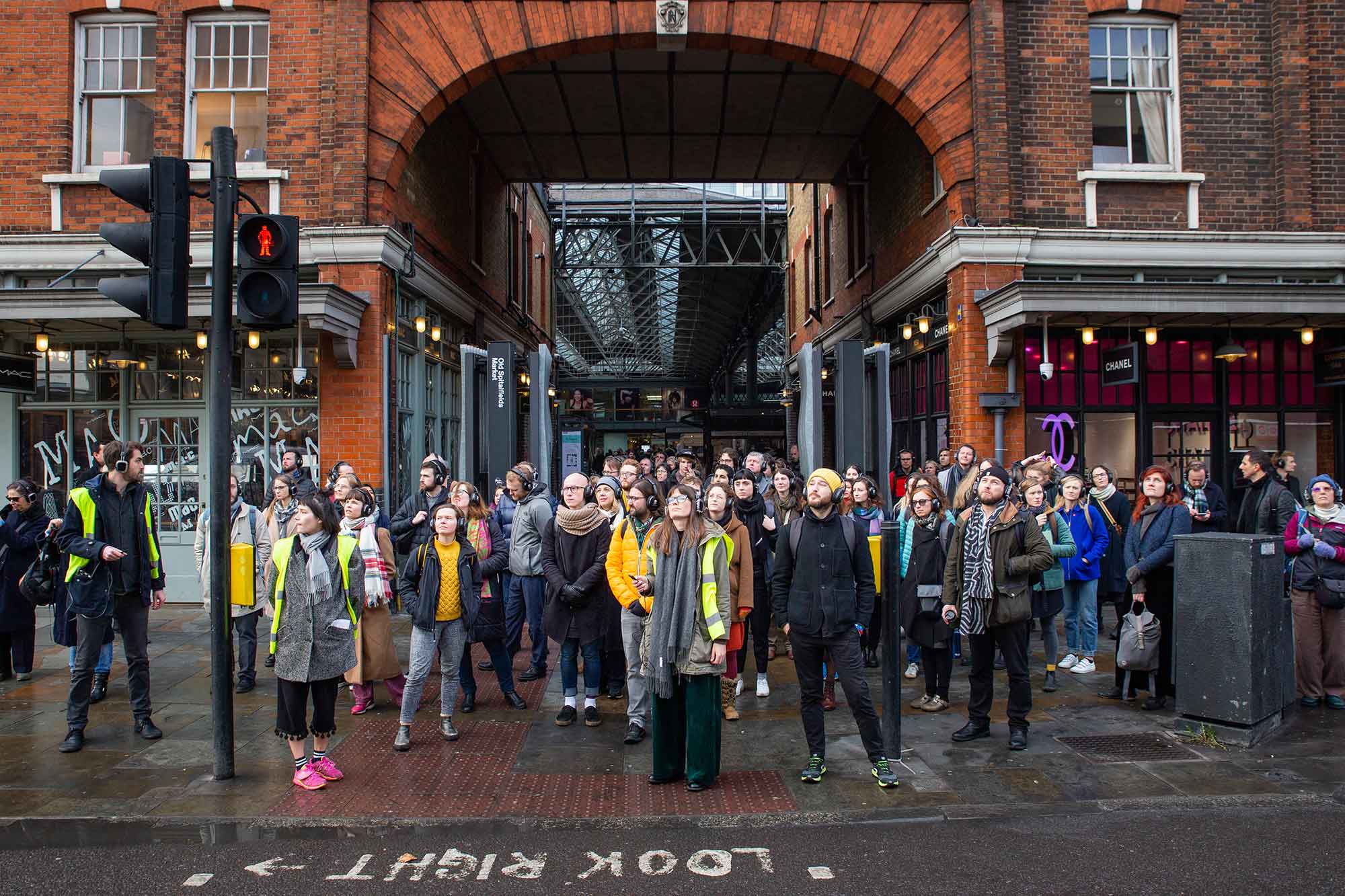- Login
Critical Spatial Practice




‘I speak and speak,’ Marco says, ‘but the listener retains only the words he is expecting. (…) It is not the voice that commands the story: it is the ear.’
Italo Calvino, Invisible Cities
“Hello? Hello? It’s me, the Future. Can you hear me? Of course you can, you can hear me all around you all the time. You just need to listen.”
A group of 120 people enter the city streets wearing headphones. They are guided by the Future – a synthetic female voice that encourages the group to look at the buildings, people and urban spaces they pass from the perspective of possible versions of her, the Future. Walking through different parts of the city from crowded pedestrian streets to deserted parking lots, from busy shopping malls to quiet back alleys, the group listens to the voices of the present: residents, politicians, developers, planners and architects who reflect on and tell the stories of London in 2019.
Choosing between three channels that simultaneously play out different stories and perspectives, the group performs a series of experiments on themselves and the places they walk through. How do we relate to each other in urban space? How does money and property affect our relationship to the places we inhabit and to each other? How does the Future experience life in London in 2019? And how do we experience the Future’s view of our present?
The stories in the three channels intersect, talk to, and challenge each other through a playful dialogue that explores how the urban environment can be seen as something performative, constantly produced and invented according to the engagement of different people and their various practices and perspectives.
The group watch each other, make individual decisions and yet remain always part of a group. While they observe the city from a distance, the group intervene by playing games like standing completely still in a busy street; spying on people by following them closely; having a gentrifiers’ anonymous meeting in the middle of Spitalfields. The journey through the city feels more and more like a collective performance.
Cecilie Sachs Olsen is a British Academy Postdoctoral Research Fellow at the centre for the GeoHumanities at Royal Holloway, University of London. She is here working on the research project: ‘Arts for Urban Change: negotiating the possibilities and practices of participatory art in urban development’. Cecilie’s PhD was one of the first performance practice-based geography PhDs,
advancing innovative work at the intersection of urban and creative geographies and performance practices. Building on her experience working on research platforms that develop urban strategies where an artistic approach is key (e.g. Metropolis Lab, Copenhagen 2007; ReOccupation and Urban Breeding Grounds, Zurich 2012/13), the PhD analysed the participatory artwork of Cecilie’s artist collective zURBS, which explores how socially engaged artistic practice can be used as a framework to analyse and re-imagine urban space and politics. zURBS has made a series of interventions, exhibitions, workshops and audio walks in England, Norway, Denmark, Switzerland, Germany and Belgium. Cecilie is the chief curator of Oslo Architecture Triennale 2019, which uses fiction, art and performance to explore ‘the architecture of degrowth’ – alternative social and spatial structures that question the supremacy of economic growth as the basis of contemporary societies. She is also the co-founder of the urban performance collective, zURBS, which explores how socially engaged artistic practice can be used as a framework to analyse and re-imagine urban space and politics. zURBS has made a series of interventions, exhibitions, workshops and audio walks in England, Norway, Denmark, Switzerland, Germany and Belgium. Cecilie has published her work widely in academic journals such as Progress in Human Geography, cultural geographies, Environment and Planning D: Society and Space, Geography Compass and Interntional Journal of Cultural Policy, as well as in volumes such as Invisibility Studies (Peter Lang) and the Berkeley anthology pARTicipatory urbanisms. She also recently published the monograph ‘Socially engaged art and the neoliberal city’ (Routledge, 2019), which discusses the social functions of art in an era of neoliberal urbanism.
Mainstream urban place making is often a visual process designed to enhance the economic prospects of a place in order to sell it to desired investors, residents or tourists. In these visualisations ‘the future’ appear as a commodity that is fixed, controlled, and ready to be traded and exchanged for wealth creation. As an alternative to these place-making processes, this work explores ways of ‘place-listening’ – an immersive, embodied and multidirectional engagement with a place that adopts key tenets of critical spatial practice by challenging the view that alternative futures lie outside of the city’s reach or can only be produced by the so-called experts that plan and design it.
Book: Calvino, Italo. 1979. Invisible Cities. 2nded. London: Pan Books
Performance: Rimini Protokoll, Remote X, ongoing, various locations. https://www.rimini-protokoll.de/website/en/project/remote-x
Photo series: Richard Wentworth, Making do and getting by, 1973 – 2000, London.



































































